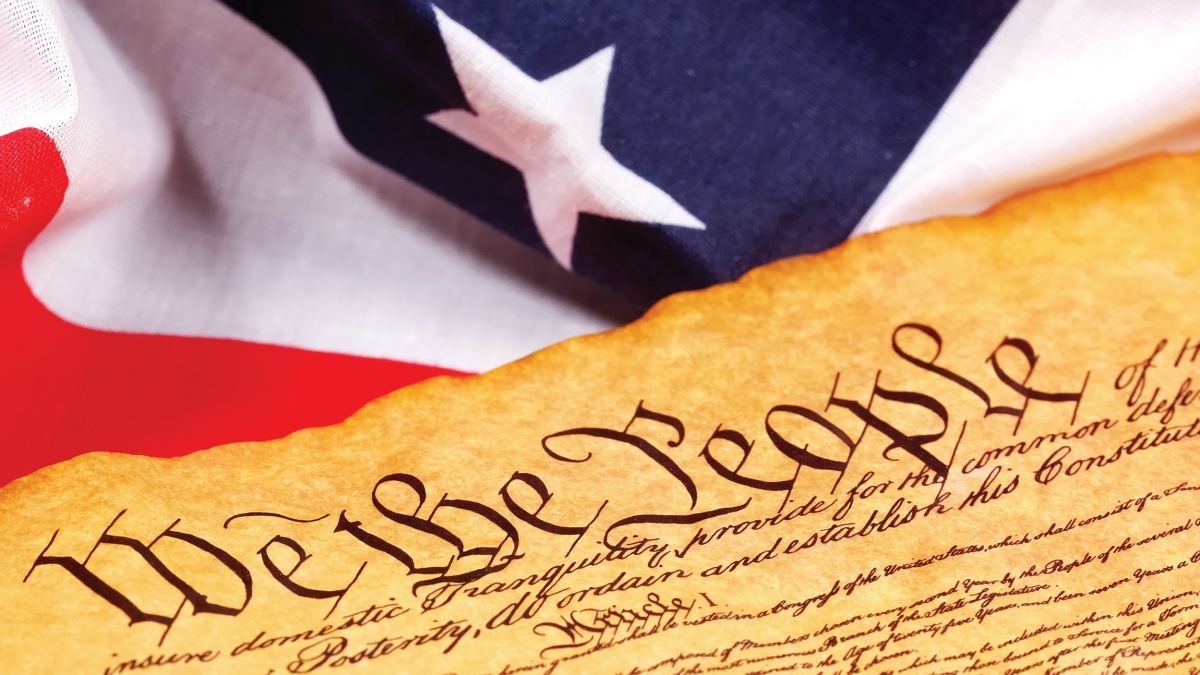Think Americans have a pretty firm grasp on the basics of U.S. government? Think again.
The annual Annenberg Constitution Day Civics Survey found that only a quarter of those surveyed could name all three branches of government. What’s more, more than a third couldn’t name any of the rights guaranteed under the First Amendment.
That’s troubling news to Peter McNamara, a professor of practice at Arizona State University's School of Civic and Economic Thought and Leadership.
“(Those stats) mean for one thing that it is very hard for people with such limited political knowledge to participate meaningfully and constructively in civic debate,” he said. “Of course, another problem is the things that people think they know but are not actually true! I guess what these kinds of studies show is that there is a lot of work to be done on the civic education front.”
The School of Civic and Economic Thought and Leadership is rising to that challenge. The school hosted its inaugural Constitution Day Lecture in the University Club on the Tempe campus to promote understanding and appreciation of our nation’s bedrock document. Clint Bolick, associate justice of the Arizona Supreme Court, delivered the lecture titled “The Renaissance of Federalism.” Watch highlights from the evening below:
To help beef up your constitutional cachet, here are five lesser-known facts about the historical document:
1. The Constitution was nearly not ratified
“Just as we have ‘battleground states’ and ‘safe states’ in our elections today, there were some less eventful state ratifying conventions (e.g., Delaware, New Jersey, Georgia, Connecticut), and others that were hotly contested (e.g., Pennsylvania, Massachusetts, New York, Virginia),” said Zachary German, assistant professor in the School of Civic and Economic Thought and Leadership.
Rhode Island initially rejected passage of the Constitution, even refusing to send delegates to the Constitutional Convention. It took two and a half years before the state finally agreed to ratify, at which point it had already gone into effect.
In Pennsylvania, “Some delegates opposed to ratification were dragged from their boardinghouses to attend the vote in the state assembly (in Philadelphia) so that the assembly could meet its quorum,” said School of Politics and Global Studies Lecturer Tara Lennon.
2. Why we celebrate Constitution Day on Sept. 17
This one’s pretty simple: The reason we have Constitution Day on Sept. 17 is because it was the last day the convention met in Philadelphia in the summer of 1787. That was the day all of the delegates still present stepped forward to sign their names with Gen. George Washington, who presided as the president of the convention.
3. The ‘pamphlet wars’ played a crucial role in ratification
“In the pamphlet wars over ratification, it was customary on both sides to use pseudonyms, such as ‘The Federal Farmer’ or ‘Publius,’ withholding authors’ identities in order to keep the focus on ideas and arguments, rather than personalities,” German said.
In a last-ditch effort to sway delegates in Virginia, the Federalist Papers were shipped down to the state, where Washington helped to reprint and distribute them — and it worked.
“It was really only a few votes that made the difference in Virginia,” said Paul Carrese, director of the School of Civic and Economic Thought and Leadership.
4. Memorable names took some convincing
Elbridge Gerry — the Massachusetts governor who approved a salamander-shaped state senate district to favor his political allies, thus giving rise to term “gerrymander” — was originally famous for being one of three delegates who at the end of the convention refused to sign. And even John Hancock — the man with the most famous, iconic signature on the Declaration of Independence — was opposed to ratification as late as January 1788.
Both men eventually voted in favor of it; Hancock doing so after assurances were made regarding the promise of the first 10 amendments, and Gerry after taking the advice of leading delegates such as Benjamin Franklin and Washington who pleaded with delegates to swallow their particular objections and support the larger good achieved by the new frame of government. Gerry later served in the U.S. House and as vice president under James Madison.
5. George Washington thought we should be thankful for it
According to McNamara, on Oct. 3, 1789, Washington issued a proclamation that Nov. 26, 1789, be designated a day of Thanksgiving to God for the “favorable interpositions of his providence, which we experienced in the course and conclusion of the late war, for the great degree of tranquility, union, and plenty, which we have since enjoyed, for the peaceable and rational manner, in which we have been enabled to establish constitutions of government for our safety and happiness, and particularly the national one now lately instituted, for the civil and religious liberty with which we are blessed.”
More Law, journalism and politics
Can elections results be counted quickly yet reliably?
Election results that are released as quickly as the public demands but are reliable enough to earn wide acceptance may not always be possible.At least that's what a bipartisan panel of elections…
Spring break trip to Hawaiʻi provides insight into Indigenous law
A group of Arizona State University law students spent a week in Hawaiʻi for spring break. And while they did take in some of the sites, sounds and tastes of the tropical destination, the trip…

LA journalists and officials gather to connect and salute fire coverage
Recognition of Los Angeles-area media coverage of the region’s January wildfires was the primary message as hundreds gathered at ASU California Center Broadway for an annual convening of journalists…


